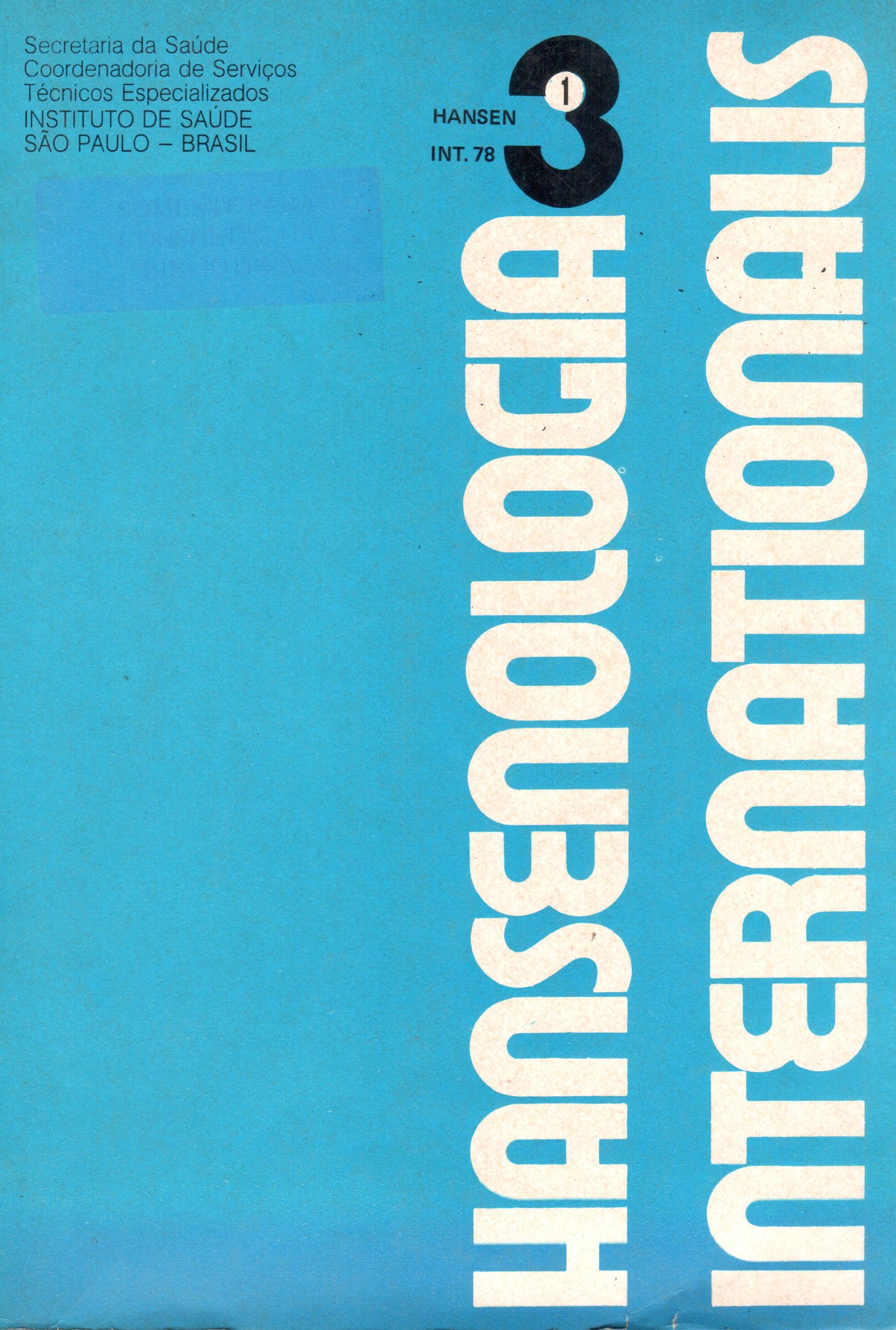Resumo
The "tsará-ath" of the Hebrew Books, translated as "Lepra" in the Greek "Septuaginta" Bible was a ritual defilement based on various skin and scalp lesions and on blemishes, probably mold, on garment, leather, walls and stones. The previous appellation ("Lepra") of those lesions changed to "Vitiligo", "Psoriasis"' "Tinea", etc. but is still current for Hanseniasis (Hansen's disease), whose signs cannot be found in the Bible. This historical linguistic confusion is an important cause of serious psycho-social, medical and preventive problems in Christian endemic countries, spreading to nonChristian areas. The last known example is that of the highlands of Papua New Guinea, where Hanseniasis was "a disease like the others", until the arrival of Western influences and religious missions, resulting in stigmatization and ostracization of patients and their families. To ensure that evangelization should neither be accompanied by discrimination nor by misinformation about the disease, some modern Bible translations are no longer using the word "Leprosy". This term has also been abandoned by the Brazilian Ministries of Health and of Social Welfare, as well as by the United States Public Health Service, and by the government of Portugal.
Referências
2. AYALA URIBE, M. G. La lepra en la Sagrada Escritura. In: JORNADAS ARGENTINAS DE LEPROLOGIA, 8.°, Buenos Aires, 1974 apud Leprologia, /9(2):275-280, 1974.
3. BECKER, I. Uma denominação nova e racional para doença antiga. Editorial. Rev. Med. Est. Guanabara, 38(20):212-215, 1971.
4. BROWNE, S. G. Leprosy in the Bible. London, Christian Medical Fellowship, 1974. 20 p.
5. BURGESS, P. Shall we change the names leper and leprosy? In: CONGRESO INTERNACIO- NAL DE LA LEPRA, S.°, Habana, 1948. Memoria. Habana, Editorial Cenit, 1949. p. 818- 819.
6. COCHRANE, R. G. Biblical leprosy. A suggested interpretation. What should be the Christian's attitude toward it? Star, 15(10):1-3, 1956.
7. FAGET, G. H. apud SASTRE, P. Os hansenianos de Pernambuco se dirigem ao 6.° Congresso Internacional de Leprologia. 0 Momento, Recife, 3(28):1, 1953.
8. FELDMAN, W. H. Hansenosis for leprosy. I. Am. Med. Assoc., /53(10:104, 1953.
9. GOLDMAN, L.; MORAITES, R. S.; KITZMILLER, K. W. White spots in biblical times. Arch. Derm., 93(6):744-753, 1966.
10. CRAMBERG, K. P. C. A. "Leprosy" and the Bible. Bible Translator, 11(1) Jan. 1960.
11. JEANSELME, E. La lépre est-elle mentionée dans la Bible? In: -. La lépre. Paris, Doin, 1934. v. 1, cap. 3, A, p. 12-16.
12. KATZENELSOHN, I. L. Talmud and medicine. Berlin, Haim, 1925 apud TAS, J. On the leprosy in the Bible. In: INTERNATIONAL CONGRESS ON THE HISTORY OF SCIENCE. 7th, Jerusalem, 1953. Proceedings apud Star, 14(9):1-2, 1955.
13. KERR, J. M. Social factors operating against leprosy control in the highlands of Papua New Guinea. Papua New Guinea. Med. J., 16(2) :118-120, 1973.
14. LACAZ, C. S. 0 neologismo hanseníase. Folha de São Paulo, São Paulo, 26 jul. 1970.
15. LENDRUM, F. C. The name "leprosy". Am. I. Trop. Med. Hyg., 1(6):999-1008, 1952.
16. LENDRUM, F. C. The tragic name of "leprosy". Mod. Hasp., 64:79-80, 1945.
17. LETAYF, S. Recherche sur la mentalite des malades de la lepre. Rev. Psicol. Norm. Patol., 1:3-59, 1965.
18. LIE, H. P. On leprosy in the Bible. Acta Derm. Venereol., /8(4):524-545, 1937. Lepr. Rev., 9:25-31, 55-67, 1938.
19. MAC ARTHUR, W. Mediaeval "leprosy" in the British Isles. Lepr. Rev., 24(1):8-19, 1953.
20. MANGIATERRA, M. "Terapia Semantica" en la educación sanitária anti-hanseniana. "Semantic Therapy" in antihansenic health education. Hansen.: res. not./abs. news, 3:105-110, 1972.
21. MESQUITA, A. P. Hanseniase. Conceituação atual. Gazeta da Colônia, Rio de Janeiro, 3(12): 24-25, 1975.
22. OPROMOLLA, D. V. A. Lepra e hanseníase. Fênix, /(2):4, 1976.
23. PEARSON, E. A. Leprosy or Hansen's disease: a study of semantic conflict. Hansen.: res. not./abs. news, 5(1):5-13, 1974.
24. RABELLO, F. E. Morbus Hansen (Moléstia de Hansen - "lepra"). Rol. Serv. Nac. Lepra. /4(1/2):5-16, 1955.
25. ROLSTON, R. H. & CHESTEEN, H. E. The identification of psychosocial factors related to the rehabilitation of leprosy patients. Baton Rouge, School Soc. Welfare, Louisiana State Univ., 1970, 227 p.
26. ROTBERG, A. The exorbitant and prohibitive price of sulfones: social degradation and economic collapse. Hansen.: res. not./abs. news., 3(2):295-302, 1972.
27. ROTBERG, A. Heirs of a spurious heritage. Star, 34(4):12, 1975.
28. ROTBERG, A. 0 pejorativo "lepra" e a grande vitima de grave erro médico-social-histórico: a indefesa América Latina. Rev. Hist., 101:205-304, 1975.
29. SIMONS, R. D. G. P. Dermatologie der Tro pen. Amsterdam, Scheltema Sc. Holkema, 1950.
30. STICKER, G. Die Lepra. In: MENSE, C. Handbuch der Tropenkrankheiten. v. 10 apud GRAMBERG, K. P. C. A. "Leprosy" and the Bible. Bible Translator, 11(1) Jan. 1960.
31. TAS, J. On the leprosy in the Bible. In: INTERNATIONAL CONGRESS ON THE HIS- TORY OF SCIENCE, 7th, Jerusalem, 1953. Proceedings apud Star, /4(9):1-2, 1955.
Este periódico está licenciado sob uma Creative Commons Attribution 4.0 International License.
